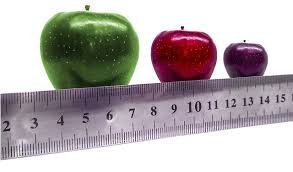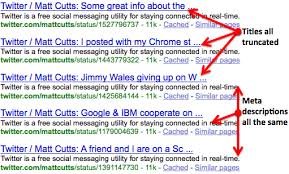Writing a Perfect SEO-Optimized Articles in WordPress
What are SEO-Optimized Articles?
SEO-optimized articles are content that is written as per certain rules to enable content to be visible on Google and to rank higher for SERPs for certain keywords. When writing articles, it is good to adopt SEO rules so that you stand a chance of ranking better on search engines.

Much has been said online about how to write SEO-optimized articles for Google, however, it takes practice to ensure you are in line with the rules required and this sometimes becomes a difficult task for bloggers, freelance writers and to business owners also.
It is worth noting that having a high SEO ranking is the only way to take your content to a broader readership. Note that just filling your article with keywords might also serve as a disadvantage as it may be an annoyance to your readers.
In today’s digital market, content creation is crucial for revenue generation for online companies and this requires bloggers to know how to write SEO friendly articles to enable sites to rank on the first page. This is crucial when it comes to bringing free traffic to websites and blogs. A site that does not appear among the top pages of search engine results has lesser chances of driving organic traffic.
In this article, I have elaborated on the most important and proven steps that will help you craft killer content that will unhide it from the crowd. One thing that I should make you know is that Google is smart, so you must ensure to create content that is relevant to your target readers.
Let’s get into it!
1. Plan Your Content
This is the number one proven tactic that every blogger/freelance writer/website or blog owner should know. The first thing to do here is "think first and write later". This will help you know and pick a topic to write on. Remember, you must know what you want to tell your readers. Once you have identified what you want to tell them, you take the step of putting it into content.

Note that content is the king. The topic you decide to write on should be relevant to your target readers as well as your site’s niche. If your site is based on health, then you can decide to write something that will help people on matters of their wellbeing. Most importantly, ensure to write on trending topics.
2. Working With Keywords to create SEO-optimized articles
Select the right keywords
The keywords you select will determine whether you will achieve better search engine rankings or not. If your domain is still new you should avoid using complex keywords as this is like wastage of your time. Always start with simple keywords and move to the complex ones when your domain is established and old enough.

To get the right keywords you need to do a keyword research. Here, you need to take your time and research the phrases and queries that your target readers are using on search engines and find out how often they do that every month. This is the best way to find out the competitiveness of particular keywords.
If you find that the target keywords you are planning to use have been searched more than a hundred times in a month, know that they are very competitive. It will be difficult for your content to obtain better ranking if you use them.
On the other hand, if you decide to use long-tail keywords, you should know that they are usually less searched and are less competitive.
Make use of Keyword Research Tools
Once you have listed some target keywords for your article, your next step is to use Keyword research tools such as Google Keyword Planner, Bing Keyword research tools, Keywordtool.io or use the keyword search on Ahrefs.
The keyword research tools are helpful as you will get an insight of how competitive your target keywords are and how often people search for those keywords that you are planning to use in your SEO optimized article.
Include the target keywords in your post title to make your title search engine friendly
The title or topic of your post matters a lot when it comes to search engines. Your title is what your article is about and is what Google displays your posts in search results. This is the reason why my first step above was to “Plan your content”.
Planning will help you to decide how your content will flow and whether your readers will continue reading your post or will feel pissed off before scrolling down your post.
NOTE: Ensure to include your focus/target keyword in the title of your post and within the article as well.
For instance, in my post, I have targeted “Social media marketing” in my other post. In my title, I wrote “9 Must-Have Tools and Tips for Social Media Marketing 2018”
Pro Tip: Ensure your SEO title does not go beyond the required character length of between 65-70 characters, which include spaces.
Make use of keyword variations
Keyword variations, also known as LSI (Latent Semantic Indexing) Keywords is simply to use keywords that are related to your focus/targeted keyword. For instance, in my post, I have used my target keyword as “SEO optimized articles” and this is the keyword I am looking to rank for throughout my post.
These LSI keywords make your content to be understood by Google thus increasing the opportunity of ranking for more keywords.
NOTE: Keep the keyword density of your SEO article at around 2-3 %.
To know your keyword density, use Yoast SEO. However, if you are unable to use this tool, you can use the normal rule which is, including your target keyword in the title, then in the first and final paragraph of your post and make sure it is read organically.
3. Make your post the right length
Although I cannot tell how Google’s search algorithms work, from the research by SEO professionals, it is clear that the more readers spend time reading your article, the more chances you stand to get better rankings. This is what is called time on site and it is very crucial when it comes to Search Engine Optimization.

I know many bloggers and freelance writers find it easy and quicker to write shorter posts but writing long posts is more advantageous. Although some readers prefer to read short posts, ensure to put your post in the ideal length of between 1500-2000 words. Remember content is the king.
4. Write valuable/quality content
Of all the tactics you will read on the internet, this is the most important of all when it comes to writing SEO articles. Today, everyone is putting their content out there and some of the content is poorly written so you need to write quality content for it to stand out on search engines.

Although there are other factors that will qualify your blog or website to stand out but always remember content is king. This takes us back to the point above where you are supposed to do a keyword research. By doing a keyword research, you will know what phrases readers are using to search for information.
You will find out that most readers pose queries on Google when searching for information and these are the queries you should aim at answering so that you make their search simpler. The best way to answer readers queries is to write “How to” articles.
Pro Tip: Always aim at generating quality content that will be loved by your readers and also get you organic backlinks.
5. Post Meta Description, Image Alt Attribute, Interlinks, Headings, and Permalinks
Post Meta Description
Always ensure your post has a Meta Description as this is not only a way of attracting readers to your site but also plays an important role when it comes to search engine ranking.

Your post Meta Description should be compelling so that readers can click on it and also remember to include your target keyword. Put your post Meta description the way you could put a sales copy of your product. Ensure to put it between 156-160 characters and very compelling for traffic to click on it.
Meta descriptions are vital and if you have not been adding them in your previous posts, you should go back and add one in every post. Writing a compelling Meta description, which serves as a summary of the article and targeted keywords, will help to increase search engine rankings.
Image Alt Attribute
I must make it known to you that Google cannot read images but recognizes them as text. Therefore, if you want Google to understand what the images you upload are all about, you should stop naming them like image001.jpg but instead name them using proper image names.
The best thing to do is to set image alt attribute manually while uploading or use SEO Plugins such as SEO Friendly Image. Keep the name of the image relevant to the image itself; you can also include your target keyword while naming your image.
Use of interlinks
Always ensure to link back to previous posts you wrote that are relevant to your current post. This is helpful when it comes to reducing the bounce rate as readers will spend more time reading your posts and also helps search engines to re-crawl your previous posts. You can automatically link back to your previous post by using a plugin called SEO Smart Links.
For manual linking, when you click on the Insert/edit link icon, you will see an option that requires you to input a URL and a Title. Ensure to type the targeted keywords of the destination post you are linking your current post to. You can link to as many posts as possible so long as they are within the site/blog and are relevant to your current post.
H1, H2, H3, H4 Headings
To effectively optimize your article for search engine ranking, you must make use of heading tags. The default heading tag for a post is always H1 in an SEO-optimized theme, so for your subheadings, you can use H2 and then an H3 heading tag and so on.
Pro Tip: Make sure to include your keywords in H1, H2, H3, H4, and so on.
Using proper heading tags is crucial for SEO optimization.
Permalinks
When writing your post, you must have noticed that your post title contains lots of stop words. Read here and here for a list of stop words.
For instance, when I write my post with the title
8 Ways How to Write SEO Optimized Articles
The post permalink will appear like:
Domain.com/8-ways-how-to-write-seo-optimized-articles
In this case, my stop word is “to”
You should change the permalink to remove the stop words. In my case, I will have to click on edit permalink and change it to “ways-how-write-seo-optimized-articles”.
NOTE: You should never edit your post permalink after you publish the post. Always do the editing before you publish it. Also, ensure to make your post permalink as short as possible and include your target keywords.
6. Link to relevant and high authority sites
As mentioned above that you should minimize bounce rate by use of interlinks, you should also link to high authority sites that are relevant to your current post but the sites you link to should not compete with you on your main/focus or targeted keywords.

Quick wrap up
Plan before you write
Know how to work with keywords by either manually selecting your target keywords or using keyword research tools.
Include your target keywords in your post title and also use keyword variations in your post
Optimize the length of your post
Generate valuable content
Create compelling meta description and make use of the Image Alt Attributes
Build proper H1, H2, H3, H4 headings and optimize post permalinks
Cross-link your post by linking to previous posts and also linking to high authoritative sites
All the above tips when practiced properly, you should be able to create SEO-optimized articles that will achieve higher SEO ranking within no time.
What are the other ways you know about how to write perfect SEO-optimized articles to rank in search engine?
Hey there-SEO is a lot of fun to learn. I've been dipping my toe into it lately.
Did you know Steem links tend to be no follow? They become follow links after around the $10.50 mark or so.
Hope that helps you or your readers out!
-Jeff
Great post, man! I've been using Yoast for quite some time now to have a tool for keywords and to change my meta description. I recommend that Wordpress plug-in to anybody.
Another aspect of SEO many people forget or have a hard time dealing with is backlinking. It's an important part of increasing your ranking in search engines. I try to backlink to my site when I write post on Steemit, and I've seen people do it on Medium too. I wonder how much using either site helps SEO ranking?